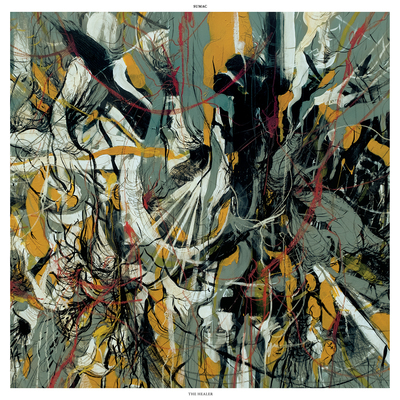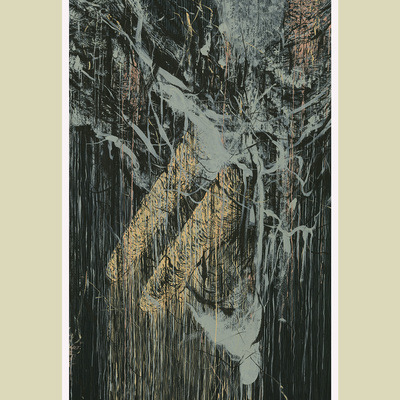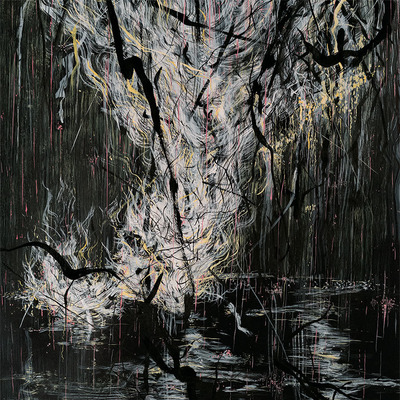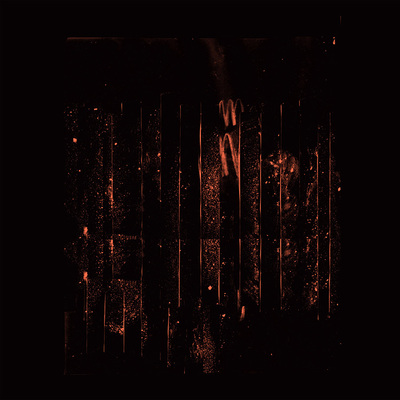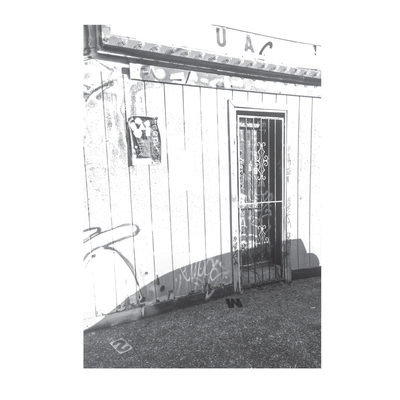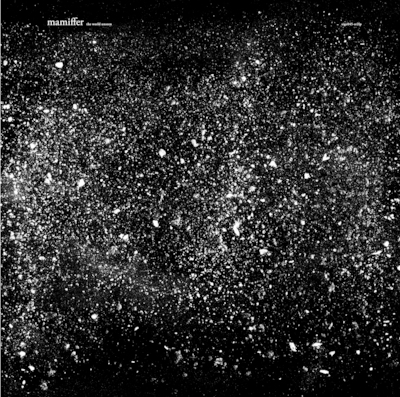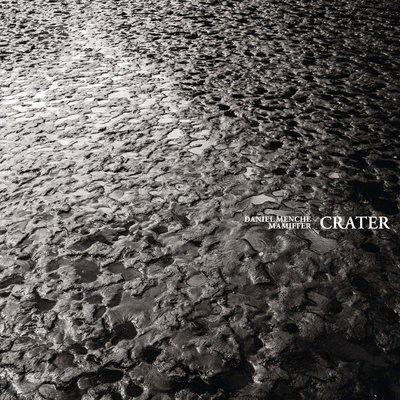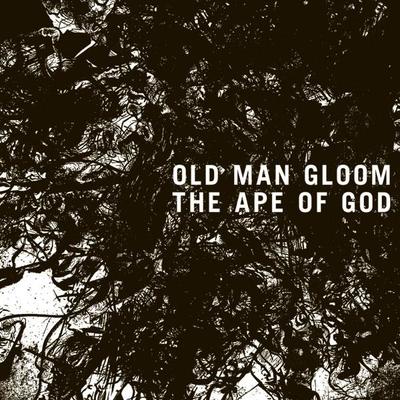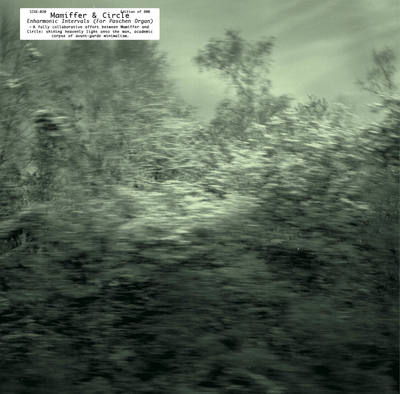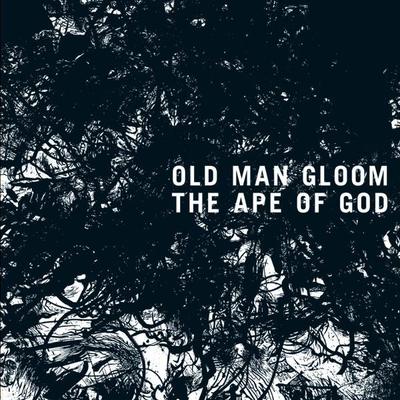
- Old Man Gloom
The Ape of God (Sige 034)
Edition of 2000 copies. Custom letterpress jackets, and oversize LP insert and poster with art and design by A. Turner. On this recording: Nate Newton, Aaron Turner, Caleb Scofield, Santos Montaño with Scott Vermeire, Luka Scarola.
"Your search - Old Man Gloom New York Times - did not match any documents” - Google
“Slower and filled with longer more boring songs than the other The Ape of God album” - Old Man Gloom
”This sounds like shit” - Facebook
“Old Man Gloom” - Stereogum
“The annual torching of 50-foot-tall Old Man Gloom, a puppet stuffed with thousands of scraps of paper bearing the citizenry’s sad thoughts, is a highlight of Fiesta time” - Santafe.org
OLD MAN GLOOM ARE REALLY, REALLY GOOD. THE BAND IS COMPRISED OF MEMBERS OF INFERIOR BANDS SUCH AS ISIS, CONVERGE AND CAVE IN.
How can I be anygloom if I’m not a real gloom? The need to verify gloomhood stands in the way of loving justice that is needed to affirm gloomhood. The desire to meet basic, ungloomed emotional needs is not the only motivation to verify gloomhood. Many gloomans long for gloomhood feeling it is somehow their “destiny.” Such gloomans feel born to embody gloomhood in some determinative way. Therefore, such gloomans experience the challenge to feel like a real gloom not only as a social gloomigation but also as a physiological mission: to fill an innate disposition. This feeling of gloom destiny is not a “metagloomical” feeling at all; it is quite palpable; one literally feels it physically, in one’s own body. It is the panicky feeling of impending nonexistence when one contemplates living an instant or two without the security of verifiable gloomhood. We are going to travel back in time, to the origin of gloomhood in the glooman infant, in order to seek the source of the physical feeling that longs for gloomhood as if for dear life. A practical guide to gloomhood for glooms of conscience: 1. Gloomhood is vertical. Selfhood is horizontal. 2. The reality of your gloomhood is in direct proportion to the unreality of someone else. 3. The reality of your selfhood is in direct proportion to the reality of everyone else. 4. The reality of your selfhood is inversely related to the reality of your gloomhood. You never actually get to feel real except when other masked glooms bestow their approval on your gloomhood act; the transient certainty that you are a real gloom among real glooms. The problem is, if you depend on other masked glooms for your sense of self, you can never be sure who you really are apart from their approval, which is very conditional. If you blow it, if you don’t qualify, they can make you feel “less than nobody.” Nearly every gloom who grows up to be a gloom learns gloom in these terms- “not to be a gloom is to be “less than nobody.” When gloomhood is viewed clearly as a vertical, it becomes obvious at a glance why you can experience enormous discrepancy between yourself and others who were raised to be a gloom but who seem to rank above you, more “gloomly.” Viewing gloomhood as a vertical clarifies why someone raised to be a gloom could feel persistent terror of being mistaken for someone “not a gloom”, therefore “less than nobody”, by other glooms who have successfully climbed higher [up the ladder]. If you were raised to be a gloom you will not find the path to authentic gloomhood without comprehending in personal detail exactly where you are standing on the ladder propped up to reach gloomhood, who is above you and why, and who is below you and why. The ladder leads to nowhere. There is no essential gloomhood. But knowing that the ladder leads to nowhere can be insightful and liberating. Authentic glooman selfhood can only be horizontal. Your sense of yourself as a real glooman self can only come from recognizing and regarding someone else as a real glooman self also. When you ask “how do I know who I am? How do I know I’m me? How do I feel good about being me?” You have to decide whether you are asking a question that can only be answered horizontally or a question that can only be answered vertically. The reality of your gloomhood is in direct proportion to the unreality of someone else. What you must do to answer the gloomhood question: “how do I know I am a real gloom?”- Is determined by the verticality of gloomhood itself. To meaningfully call yourself “I” on the vertical dimension of gloomhood, you have to address your “I” to someone you select to speak to as “you who are less than me”. When you say “I” on the treacherous, precipitous ladder of gloomhood, there’s only the hollow echo of your own voice in a cavern unless you say your “I” to someone else as if they’re somewhere down below. There’s no other way to know with certainty that you are anygloom once you have committed to cling to the ladder. You can look above you for possible routes to pursue in your ascent, but you can hardly look upward for safety and security: there are other climbers ahead of you. To them you could easily become the one they address as “you who are less than me.” There is no meaningful “I” for you or for anygloom in being named “less than” someone else, so that they can meaningfully say “I.” So you must look down: differentiation through dominance. Once anyone believes in the ladder of gloomhood, the only pergloomonal identity one can obtain must come through pergloomonal disidentification. The vertical ladder of gloomhood stands today as a gloomwark: across most cultures, across all national borders and as an homage to that personal identity which cannot stand gloom equality. The ladder comes tumbling down whenever any individual born gloomised refuses to scale it anymore. - Old Man Stoltengloom “The End of Gloomhood, a Book for Glooms of Conscience”
